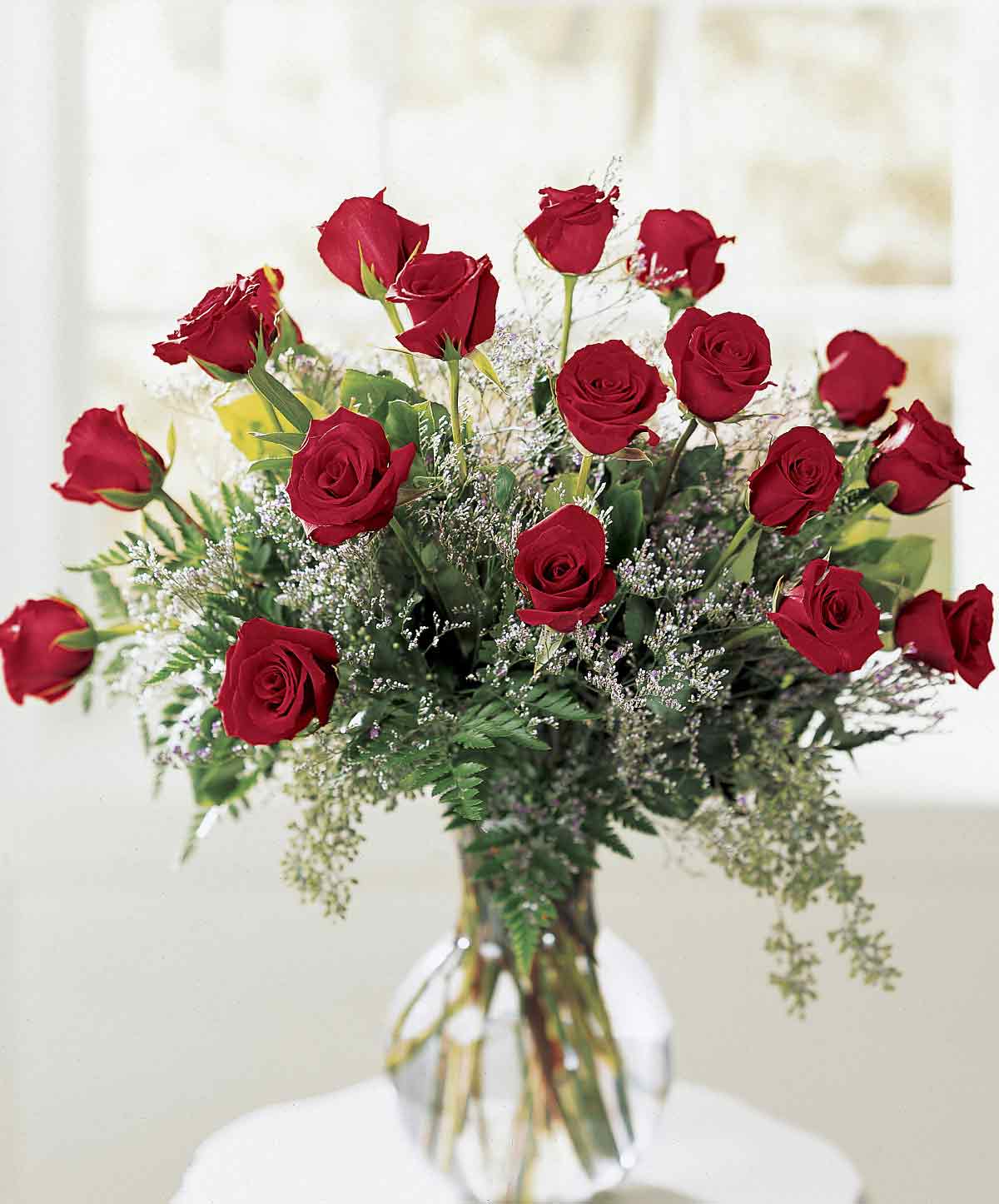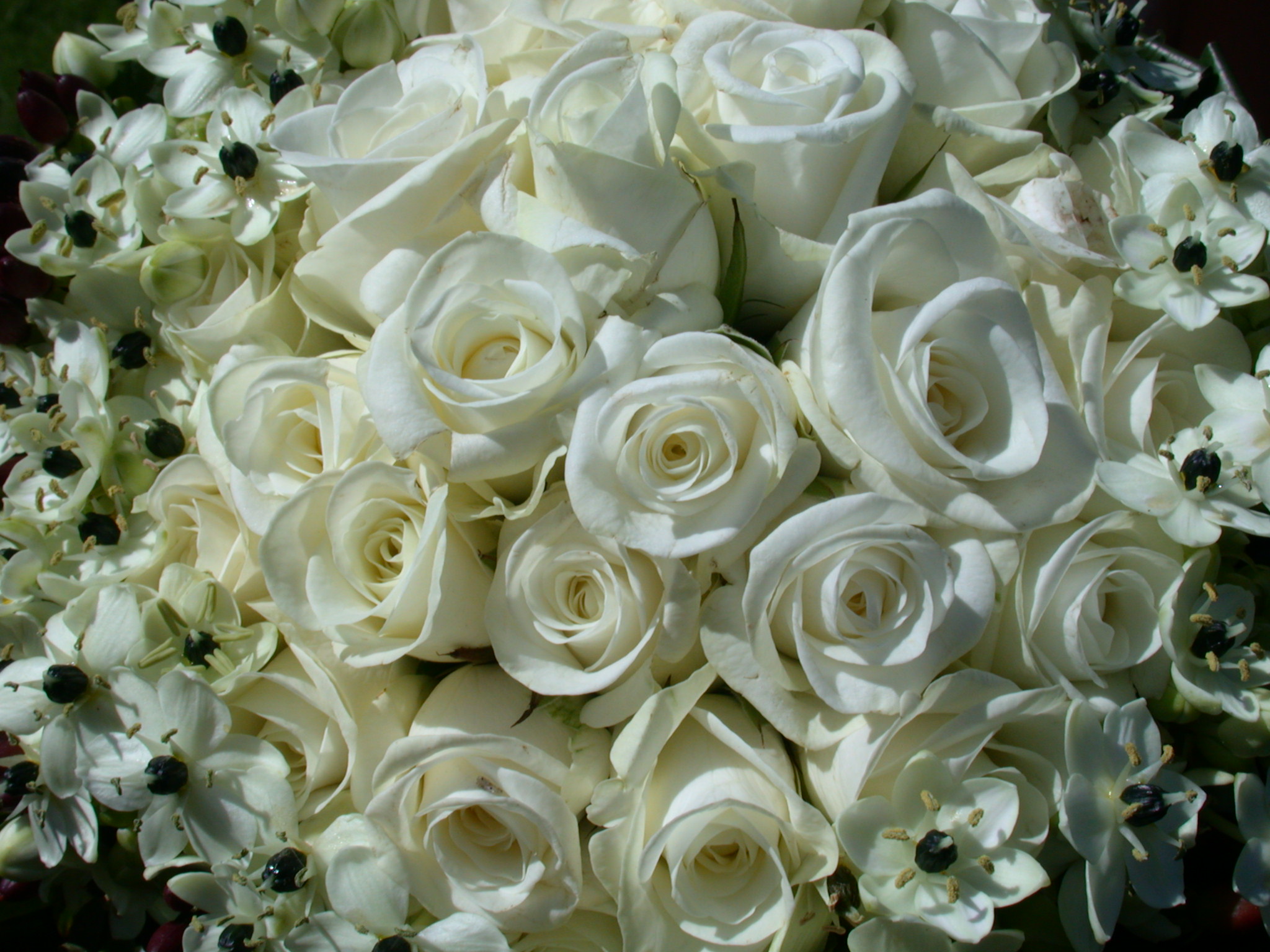The name rose comes from French, itself from Latin, rosa, which was borrowed from Oscan, from Greek ρόδιόν rhodion (Aeolic υρόδιόν wrodion), from Old Persian 𐎹𐎢𐎼𐎭𐎡 wurdi "flower" (cf. Avest. warda, Sogdian ward, Parthian wâr)
* 1 Botany
o 1.1 Species
* 2 Uses
o 2.1 Ornamental plants
o 2.2 Cut flowers
o 2.3 Perfume
o 2.4 Rose hips
o 2.5 Medicine
o 2.6 Culture
+ 2.6.1 Art
+ 2.6.2 Symbolism
* 3 Pests and diseases
* 4 Gallery
* 5 See also
* 6 References
* 7 External links
The leaves are borne alternately on the stem. In most species they are 5–15 centimetres long, pinnate, with (3–) 5–9 (–13) leaflets and basal stipules; the leaflets usually have a serrated margin, and often a few small prickles on the underside of the stem. Most roses are deciduous but a few (particularly from South east Asia) are evergreen or nearly so.
Pink roses in full bloom
The flowers of most species have five petals, with the exception of Rosa sericea, which usually has only four. Each petal is divided into two distinct lobes and is usually white or pink, though in a few species yellow or red. Beneath the petals are five sepals (or in the case of some Rosa sericea, four). These may be long enough to be visible when viewed from above and appear as green points alternating with the rounded petals. The ovary is inferior, developing below the petals and sepals. Roses are insect-pollinated in nature.
The aggregate fruit of the rose is a berry-like structure called a rose hip. Many of the domestic cultivars do not produce hips, as the flowers are so tightly petalled that they do not provide access for pollination. The hips of most species are red, but a few (e.g. Rosa pimpinellifolia) have dark purple to black hips. Each hip comprises an outer fleshy layer, the hypanthium, which contains 5–160 "seeds" (technically dry single-seeded fruits called achenes) embedded in a matrix of fine, but stiff, hairs. Rose hips of some species, especially the Dog Rose (Rosa canina) and Rugosa Rose (Rosa rugosa), are very rich in vitamin C, among the richest sources of any plant. The hips are eaten by fruit-eating birds such as thrushes and waxwings, which then disperse the seeds in their droppings. Some birds, particularly finches, also eat the seeds.
 Roses Flowers
Roses Flowers Roses Flowers
Roses Flowers Roses Flowers
Roses Flowers Roses Flowers
Roses Flowers Roses Flowers
Roses Flowers Roses Flowers
Roses Flowers Roses Flowers
Roses Flowers Roses Flowers
Roses Flowers Roses Flowers
Roses Flowers Roses Flowers
Roses Flowers Roses Flowers
Roses Flowers Roses Flowers
Roses Flowers
No comments:
Post a Comment